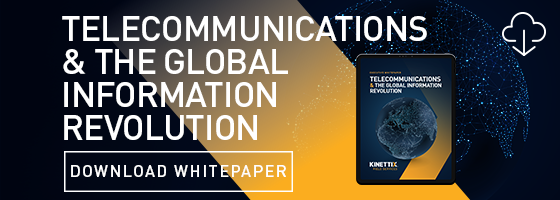Few industries have had to reinvent themselves as often as telecoms. While most businesses have been transformed and, in some cases, clobbered (think newspapers) by the rapid arrival of the digital age, telecoms have had to reinvent themselves on an almost daily basis. Imagine a restaurant having to change its menu every week, or in some cases, every day. That’s what telecoms have to do, and that is what makes the telecommunications operations landscape so challenging.
HCI Technologies describes it well in its dealings with telecoms:
“As we engage with several globally recognized telecom majors, we identified several overarching challenges impacting the sector as a whole. Most CIOs are grappling with tight budgets and the absence of a skilled resource pool.”
In short: Things are changing – constantly – and telecoms can have trouble keeping up. But if you take a deep breath, survey the landscape, and embrace it instead of fearing it, the future looks ripe with opportunity.
To fully leverage that future, though, you may well need an external partner that can help bring the right field-level expertise to your IT innovations. Not every company has the talent in-house to transition to the new telecom paradigms, so choosing to partner with a company that has an international pool of expertise is sometimes all you need.
Here’s a simple primer on how to modernize your telecommunications operations:
1. Less Is More: Sort of. Make it seem like less while offering more. The way to keep customers is to make their digital experience as seamless as possible. Build a seamless blend of telecom experiences from mobile to home to Internet of Things and allow a customer to move gracefully between platforms, and you’ll reduce customer churn. Customers don’t want to jump around, so give them a reason to stay put.
2. Invest In Infrastructure: Patching potholes, repaving roads, or building bridges is a no-brainer in the physical world, so it should be a similar no-brainer in the digital world. Yes, there is a cost. But there is perhaps a greater cost is not upgrading at all. The infrastructure needs a top-down reassessment from your data networks to your hardware, to your cloud-based capabilities to your 5G readiness and security systems. If this is beyond the scope of your budget, your company may want to partner with an external entity that can provide the field-level services you need, tailored to the local landscape.
3. Hyper-scalability: At every level, you want to have the ability to expand as needed, some innovations may not meet every customer’s needs, but you want to meet every customer's needs. And you can do that by creating custom, scalable solutions.
4. The Right People: The telecom landscape is changing as fast as the movie offerings at the local multiplex. You want people in place who can deliver the latest, more innovative solutions. We aren’t advocating cleaning house; the experience of existing hands blended with those who are up to date on the latest and greatest is often the best model. Or, at the very least, sending existing employees to seminars and workshops for the latest trends is advised.
5. Innovate: The telecom landscape is in flux, and there’s room for anything new that can help customer experience, infrastructure efficiency, and information deliverability. The telecom landscape is littered with the cyber carcasses of ideas that have flamed out, but for every misfire, there are plenty of success stories too. Failure isn’t failure; it’s trial and error and then success. YOU may just be the next big thing.
Amy Stern Consulting, which keeps on top of all of the latest trends in the business, describes the benefits of modernization:
- Become more flexible and efficient so IT can respond quickly to changing conditions
- Provide enhanced service levels to the public at a lower cost
- Transform disparate IT systems into a modern, flexible architecture that maximizes the use of limited resources
- Create new levels of transparency
Other advantages of a modernization program include:
- Cost: Modernization drives down costs in the long run, even if it causes a short-term pinch.
- Customer experience: Customers want and expect the best; modernizing will give them that experience and, in return, reduce your churn.
Look to the lessons of non-telecoms, and you’ll see where the future lies. Venerable brands Kmart and Sears were too late to the game when it came to embracing a digital experience for shoppers. By the time they finally had a decent digital plan in place, Amazon and others had already left them in the dust. The lesson there for everyone: modernize.






